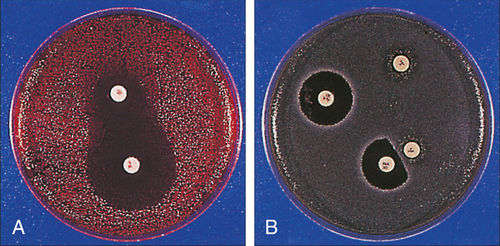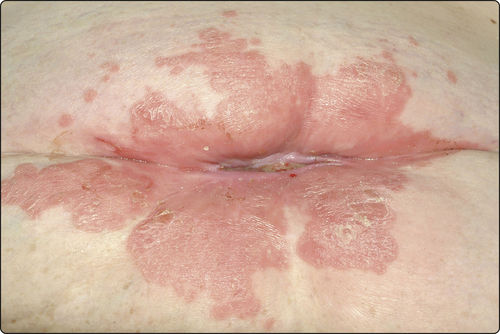Make it Simple
The word “antibiotic” takes its name from the Greek words anti, which means “against,” and bios, which means “life.” Using medical terminology word-building techniques can help you learn the meaning of many new words. When the prefix “anti-” is combined with other root words, the meaning of these terms for medication categories becomes clearer. For example, the word anti/bacteri/al indicates pertaining to; against; bacteria, which is more precise than the more commonly used term antibiotic.
HAIs are a major public health concern, and the Centers for Disease Control and Prevention (CDC) provides up-to-date information on this issue. It is estimated that 30% of all HAIs in hospitalized patients in the United States are SSIs. An SSI is defined as an infection that occurs at or near a surgical incision within 30 days of the procedure (or within 1 year if an implant was placed). Most SSIs are caused by six types or species of bacteria (Table 5-1). The most common causative agent of SSI is Staphylococcus aureus, which is present in the nose and on the skin of approximately 25% of healthy persons. An SSI is a potential complication of nearly every surgical intervention, particularly because most surgical procedures penetrate the body’s first line of defense: the skin. SSIs may range from minor to serious; they may even be deadly, depending on several factors. Each day in the operating room, surgical technologists vigilantly apply their knowledge of sterile techniques as part of the team effort to prevent SSIs.
Antibiotics are effective tools used to supplement the conscientious practice of sterile techniques. As such, antibiotics are used in surgery (1) to help prevent SSIs and (2) to treat infections caused by bacterial pathogens (disease-causing microbes) (Fig 5-1). It is important to remember that antibiotics are adjuncts that assist the patient’s own defenses to prevent—or diminish the severity of—an SSI. When used to help prevent SSIs, antibiotics may be prescribed for the surgical patient preoperatively, intraoperatively, or postoperatively.
These agents may be administered during surgery from the sterile back table in the form of topical irrigation or application of an antibiotic ointment for surgical dressings. The use of topical antibiotic irrigation at the surgical site has been almost routine in some cases. However, the increase in antibiotic resistance has caused some discussion about the careful use of antibiotics. Further study is ongoing to determine whether this practice is actually effective at reducing SSIs.
 Caution
CautionThe availability of antibiotic therapy is never considered a substitute for the consistent, mindful, and meticulous practice of sterile techniques. Prevention of all SSIs is the goal in this vital aspect of safe surgical patient care.
In May of 1804 President Jefferson sent Meriwether Lewis and William Clark on an expedition to explore the land west of St. Louis to the Pacific Ocean. One of the primary medications of the journey was mercurial salts. At this time antibiotics had yet to be discovered, but the medicinal properties of mercury were well known. Mercurials were used for the treatment of venereal diseases and also as powerful laxatives. Lewis and Clark’s expedition took along Dr. Benjamin Rush’s famous mercury pills, called “Thunderclappers.” Archeologists looking for the expedition’s campsites and trails use modern-day survey and excavating techniques to analyze and sample soil. They have discovered traces of this mercury in latrine trenches in Montana. The fact that mercury, which passed through the human digestive system more than 200 years ago, can still be detected speaks to the potency of this medication.
TABLE 5-1
| Pathogen | Percentage of SSIs (%) |
| Staphylococcus. aureus | 30 |
| Coagulase-negative Staphylococcus | 13.7 |
| Enterococcus species | 11.2 |
| Escherichia coli | 9.6 |
| Pseudomonas. aeruginosa | 5.6 |
| Enterobacter species | 4.2 |
The Surgical Care Improvement Project (SCIP) is a quality partnership developed by the Centers for Medicare and Medicaid Services (CMS) and the CDC in collaboration with representatives of several national organizations. One aspect of this project focuses on reducing SSIs, and one of its goals is to increase compliance for proven effective measures related to use of antibiotics, such as:
• Selection of the proper antibiotic
• Timing antibiotic administration before the incision
• Timing discontinuation of the antibiotic after surgery
• Identification of the person responsible for these actions
• Verification of antibiotic names, times of administration, and documentation

FIGURE 5-2 Testing for culture and sensitivity. This is a common method of determining which antibiotics are effective against a specific bacterium or fungus. Various types of antibiotic agents impregnated on paper are positioned in the culture medium, which has been inoculated with the microorganism (A). Note the areas of no colonization around some of the paper discs (B). (From Goering R, Dockrell H, Zuckerman M, et al: Mim’s medical microbiology, ed 5, London, 2013, Saunders Elsevier Ltd.)
< div class='tao-gold-member'>
Only gold members can continue reading. Log In or Register to continue
Stay updated, free articles. Join our Telegram channel

Full access? Get Clinical Tree



